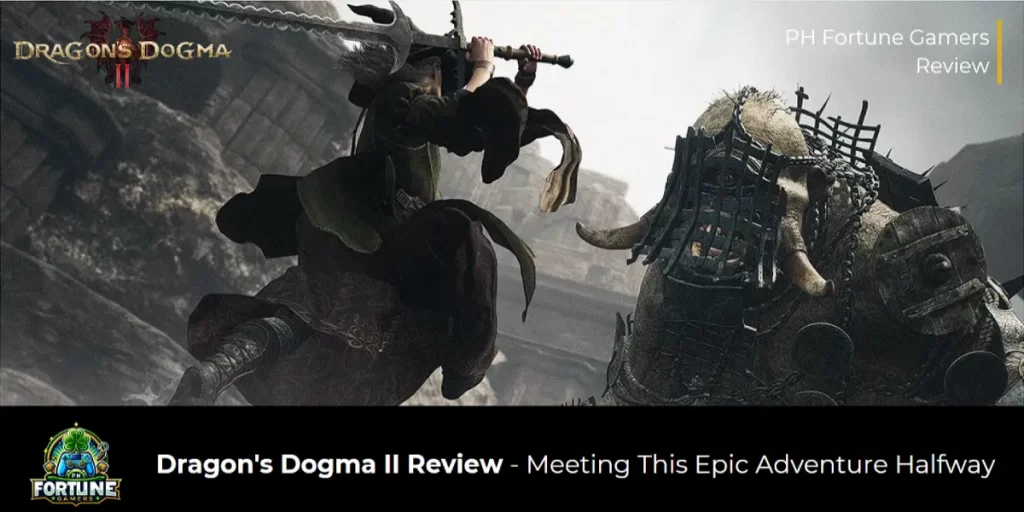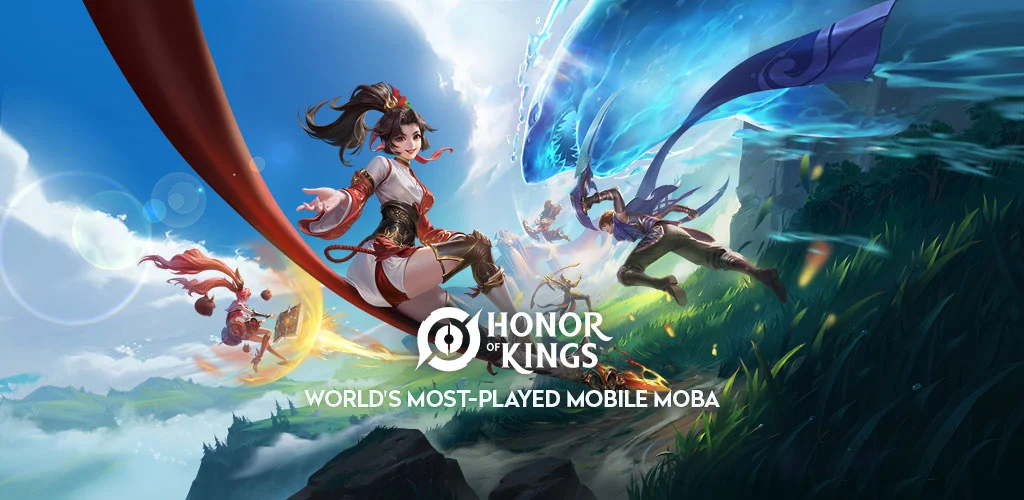Dragon’s Dogma 2 Review – Meeting This Epic Adventure Halfway

Reviewer Rating⭐️: 4.5/5
An outcome to Capcom’s action role-playing game Dragon’s Dogma 2 has been released after a 12-year wait. The following entry, Dragon’s Dogma 2, is more prominent in scope and maintains the aspects that fans and critics found memorable—and frustrating—in the original. When everything falls into place, you’re left with an exhilarating, unplanned journey that no other game has ever offered. However, there are also moments when you’ll be left bewildered and upset because of the demands placed on you by the designers.
Like in the original, you take on the role of the Arisen, a person whose heart was figuratively and physically taken by a towering dragon, and you have the misfortune of having to find it to get it back. As a result of this twist of fate, you can now direct Pawns, who are hardwired to obey the Arisen’s every command and lend their full support to their mission. The feature allows players to unintentionally influence another player’s game without actually participating, which is one of the numerous distinctive elements that make Dragon’s Dogma 2 stand out.

A unique system that drives Progression Dragon’s Dogma 2
In this high-fantasy journey, each player controls a single Pawn, their loyal companion. Two additional Pawns made by other players can be hired to round up your party of four. These Pawns’ equipment and abilities are fixed; you can only alter your own. They can’t level up either, so you’ll have to keep trading for new Pawns—hopefully ones that match your characters in stats.
Despite being unable to direct your party members, this system successfully creates the impression that you are on an adventure with them. The Pawns’ AI is reasonable enough to assist the injured, revive you when you’re low on health, and handle combat threats competently. Depending on his past adventures with other players, the Pawn you call can point you in the direction of the goals of your current quest if you’re lucky.
Because they occasionally catch me when I fall over a fatal cliff or lead me to a chest I didn’t see while wandering, these unruly party members become self-sufficient thanks to this mechanism. My AI friends are more than capable, so I won’t have to worry about them. I can often concentrate on gathering spoils while they clean up the remains because they inflict effective damage even in combat. I’m contributing to a well-oiled machine.
Incorporating these indirect contacts is a neat twist because your primary Pawn’s ability to aid another player’s development when hired depends on his or her experiences in your game. What a brilliant idea! Even though it was introduced more than ten years ago, this is the only game that has come close to replicating this approach.
Because of Pawns, the game’s instructions aren’t apparent, and the player receives little direct assistance. However, I’m enjoying Dragon’s Dogma 2 open-world exploration, which brings to mind Elden Ring: you have to be curious about the world around you to find caves and other interesting places; if you look down every path, you might find a chest or an encounter that tests your mettle.
Because of Pawns, the game’s instructions aren’t obvious, and the player doesn’t receive much direct assistance. However, I’m enjoying Dragon’s Dogma 2’s open-world exploration, which brings to mind Elden Ring: you have to be curious about the world around you to find caves and other interesting places; if you look down every path, you might find a chest or an encounter that tests your mettle.
Unfortunately, there isn’t a ton of Pawn dialogue to work with, and their tendency to use the same voices over and over is annoying. Even though the makers claim to have fixed this in the sequel, it is still one of my big gripes from the original game. Even after you’ve checked out the central city’s ladder, you’ll hear about it repeatedly, and shopkeepers will nearly always act worried if you don’t purchase anything.

A battle For The Ages
The fighting in Dragon’s Dogma 2 is nostalgic, like a cross between Monster Hunter and Shadow of Colossus. Characters face up against griffins, ogres, stone golems, and lesser dragons who are as dangerous as the ones who betrayed their hearts. Because you can cling to these creatures, you can use wrestling to find their weak spots and strike them where it hurts. Gouge out a cyclops’ one good eye by climbing up to it or burn a griffin down to give it the upper hand in the air.
The outcomes of your fights with these massive monsters are always surprising, mainly because tactics are available that I have yet to see in other games. The game’s battles make you feel like you’re plunging into a hole with a shackled beast that will try anything to kill you—or at least getaway.
The fights themselves are spectacular, but their buildup can be tedious because there isn’t enough variation in the enemies to keep up with the game’s massive scope. The Dragon’s Dogma 2 map feels twice as big as the original, but there are just a handful of adversary kinds to contend with. Wolves, goblins, bandits, and even harpies may be encountered throughout the day.
During the night, specters, the undead, or skeletons combine the above. Throughout the game, you may expect to face up against a wide variety of enemies, most of which are variants on the same basic design. Many ruins and caves await your exploration, but alas, they are teeming with the same kind of enemies you encountered just moments ago.
Since Dragon’s Dogma 2 requires much travel, this may be an issue for specific players. As you embark on trips with your band of Pawns, you’ll mostly be traveling on foot due to the few items that allow you to use quick travel. Whenever I ventured out of a significant town, I felt like I needed all the necessary supplies and equipment in the city; every journey felt like a real adventure.
Bring enough to last the journey back, plus some extra room for the loot you find. Your party’s health pool appears to decrease at a modest proportion whenever you or your Pawns take damage, creating the illusion that your journey is taxing them. This is one of the rare cases where rapid travel detracts from the experience instead of improving it; I like the design since it makes you feel the struggle, especially at the beginning of the game.
We’ll Give You a Hint; Good Luck with the Rest!
In addition to everything else, the game purposefully leaves directions and tasks ambiguous. By doing some research online or having the correct Pawn to lead the way, it would be easy to take advantage of an entirely new aspect of the game due to how the content was organized. There is no hand holding in Dragon’s Dogma 2. Its tips are gentle guides, so only a few head-up displays tell you where to go.
Most quests will give you a location on your map, but how you get there is up to you. Completing them will test your thinking skills because the game won’t tell you the answer right away, which some may find annoying, but others will love it because it adds to the illusion of being on an actual adventure.
Quests can be completed in numerous ways, and there are ways to fail. Though it can’t hold a candle to more imaginative role-playing games like Baldur’s Gate 3, Dragon’s Dogma 2 design is a cut above the ordinary, unremarkable fare that most players encounter.
That isn’t because of the mission design per se but because the storylines surrounding them are less captivating than the adventure and its payoffs. The story itself could have been more exciting and easy to forget, and the plot twists at the end made no sense and rendered the earlier discoveries useless.
I was so focused on reaching the next uncharted region that, at several points in my playing, I became oblivious to the events unfolding around me. Fighting, exploration, and various classes were why I spent more than 60 hours playing Dragon’s Dogma 2.
Various classes, termed “Vocations,” are available to players and pawns. There are ten, and some are player-only; I’ve loved playing with all of them and seeing what works best for me.
No two Vocations are alike.
Changing classes and squad composition brought fresh results and approaches to inevitable confrontations, whether leaping into the Mage and auto-targeting numerous foes as the Magic Archer or going all out as the Warrior serving as the front-liner. It was challenging to remain committed to a single Vocation for an extended period because each changeover introduced a different style of play.
I continued using it and even switched up the pawns to suit my new strategy. Although the enemies for minor battles may not be very varied, the classes make up for it and make it feel less repetitive.
Even when choosing equipment, progress is simple because you mostly care about having good defensive or attack values. As each blacksmith focuses on boosting particular stats or decreasing weight values to make items easier to carry, the only natural way to personalize your character in this role-playing game is through equipment modifications. Because passives acquired through a Vocation are not class-specific, you can customize the passives you can equip. For example, you can employ the Archer’s stamina gain passive while you’re a Warrior.

Your Mileage May Vary.
Because Capcom broke away from RPG conventions, Dragon’s Dogma 2 has many beautiful features, yet it can be hard to recommend because of its uniqueness. On the flip side, various players will have different reactions to these unconventional concepts.
There are two possible ways to save your progress: either you love the game’s direction guidance because time is precious to you, or you hate failing or having to live with your decisions, so you’re not thrilled about the game’s two save states: auto-save and when you sleep at an inn. Some players may find the FPS stability problematic. The framerate wasn’t constant in the build I’ve played, so while I didn’t have many issues, performance sometimes drops during busy encounters—even in busy towns.
Capcom has given Dragon’s Dogma 2 fans what they wanted with a sequel, although it is slightly improved compared to the original. Instead, it’s an updated take on the original idea, with the same ups and downs in the original game reflected in the sequel. Took offered the 15-hour mark, so it’s more of a patience test. Depending on how well you handle Dragon’s Dogma 2, you may emerge from the game ranked among the top role-playing game experiences of all time, or you might rank it among the worst.
PROS
- The Pawn system elevates the adventure, and the AI is competent at guiding the player and assisting in combat
- The lack of guidance and limited fast traveling make the adventure more fulfilling
- Combat against the more enormous fantasy creatures is impressive to fight against, even in the later stages of the game
- Pawn dialogue is limited, as they repeat the same lines too often while traveling
CONS
- Confident design choices can turn off some players, such as limited fast travel and minimal guidance from the game
- FPS inconsistencies during significant cities and busy battles
- Stories are forgettable, and characters fail to make any lasting impression or even display a likable personality
What I’ve Played
- Over 60 hours of playtime on one playthrough
- I tried all Vocations, maxing out three
- Experienced all possible endings and explored the majority of the main map and its many quests
Conclusion
The abrupt introduction of in-game microtransactions in Dragon’s Dogma 2 earned the developer much criticism. These microtransactions are more like bought cheat codes than anything else; they’re superfluous and have been in prior Capcom games like Devil May Cry 5. Neither did I, and the game’s design didn’t seem burdened by their presence. It’s a shame they’re there, but you can disregard the MTX because you can quickly get what you need.
For more Game Reviews like this, just visit PH Fortune Gamers website. Happy Gaming!


